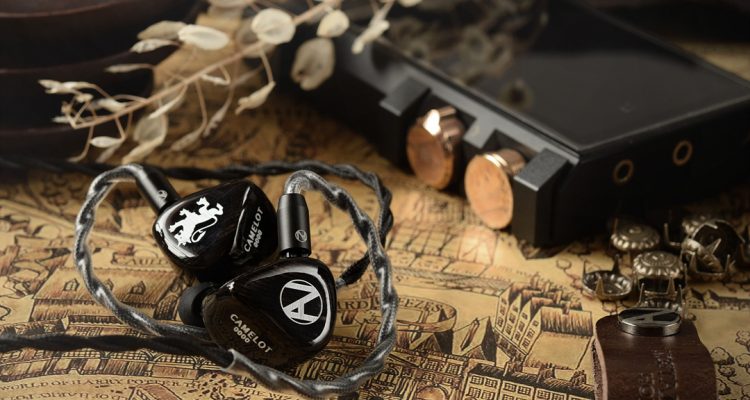
Nostalgia Audio Camelot Review: The Greatest
Nowadays countless brands come and go within this industry, and not many survive the intense competition. Nostalgia Audio is one of not many that debuted recently and actually stirred up the community with fresh vibes and good impressions. In case you haven’t heard of Nostalgia before, they’re a relatively new brand established in Hong Kong that has been creating products that are unique – both sound-wise and value-wise. Their first IEM product Benbulbin received consistent and positive feedback and later followed up with their cable products such as Olorin and Nerwen.
As the brand gain enough maturity now, Nostalgia has announced its first flagship IEM – the Camelot. To release a flagship product means that the brand is attempting to meet the trickiest demand, and to live up to such expectations, Camelot is packed with charms that distinguish this IEM from existing ones.
In case you wonder what’s so unique about this one among the others, I’m going to cover that now.


Packaging
Camelot is designed based on the legends of King Arthur from Roman Britain. The Arthurian legends include romantic and grand stories related to Excalibur, the Knights of the Round Table, and the Holy Grail. Camelot was the name of the great castle where King Arthur lived and housed the round table.
Influenced by this lore, the packaging box is covered with a beautiful art piece of Camelot castle and Excalibur. I really enjoy seeing quality design details from the box as it gives more value to the product concept without getting excessive in packaging.
Unboxing reveals the drawing of the Round Table and the Knights, a 3D sketch of the IEM on the right, and most importantly, the Camelot itself. Other than the earpieces includes a custom-grade original cable (Avalon), leather cable tie, a leather case, 3 pairs of Simbio W Hybrid tips, 3 pairs of silicone tips, and a pair of Dekoni Washable foam tips.

Earpieces – Drivers / The XBS System
Camelot is a 10-driver tribrid IEM consisting of 2 large 10mm dynamic drivers, 4BA, and 4 electrostatic(EST) drivers. Nostalgia claims they have built both the outer and inner structure of the earphone using 3D printing to efficiently incorporate unique features within a reasonably sized earphone casing. Summary of the driver configuration is as the following:
- 10 Driver / Tribrid design
- 2 DD for the lows
- 2 BA for the mids / 2 BA for the highs
- 4 EST for the ultra-highs
- Impedance: 13 Ohms @ 1kHz
- Frequency range: 15 Hz – 40kHz
- Impedance: 114dB @ 1kHz, 1mW
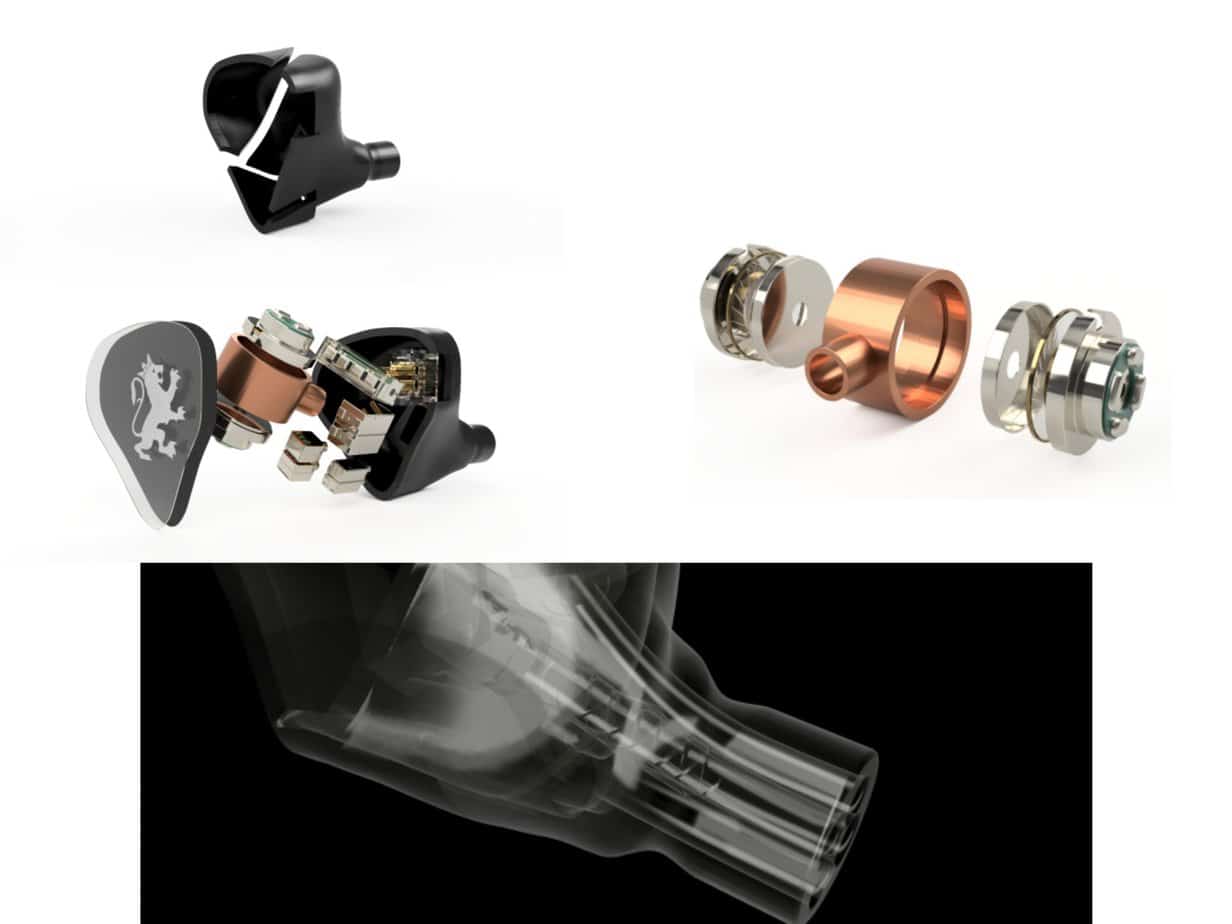
3D representation of the XBS and SFD systems
The two special structures of Camelot are XBS (Extreme Bass Sound) and SFD (Spiral Flow Device). The XBS system refers to the structure of the two large dynamic drivers used for bass reproduction.
As introduced through products like Audio-Technica CKR9, the XBS system places two dynamic drivers parallel within an independent chamber, forming a so-called push-pull structure. While 10mm drivers are often used for a single DD IEM for their sheer size, Camelot is able to use two of the large drivers while incorporating the rest of the 6 drivers. Alongside, the independent chamber housing the two drivers are made of copper, which positively affects the tone and the quality of the resonance produced by these drivers.
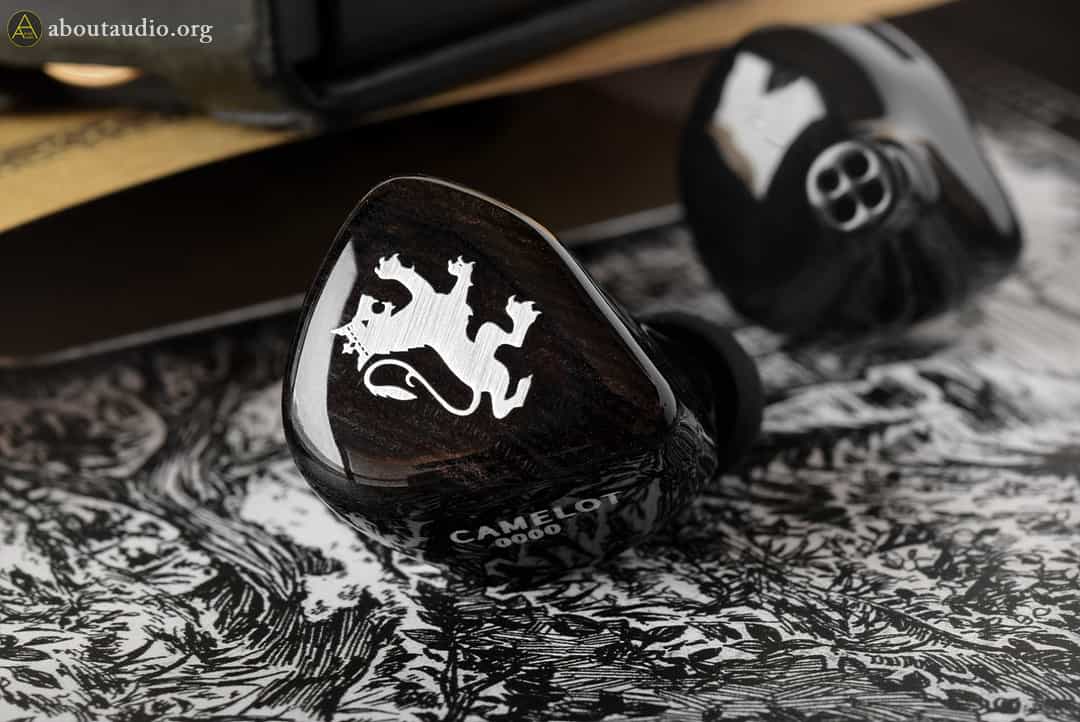
Earpieces – The SFD System and more
The sound produced by in-ears is transmitted to the ears through sound tubes and nozzles. By doing so, certain ranges of sound (usually high-frequencies) are prone to losing details. The SFD system seeks to relieve such flaws by engraving spiral grooves within the high-frequency sound tube. This allows stronger momentum for the high frequencies to retrieve better details.
Now to cover the outer elements. Camelot uses a half-recessed standard CIEM 2pin for the cable termination and T400-T500 diameter for the nozzles. Contrasting to the inside of the shell, Camelot is done pleasantly simple for the shell design and color. Glossy black for the body, dark-brown wood faceplates, and with a silver Nostalgia logo. The fit is quite comfortable despite the driver counts and structures, and the site itself is no larger than most multi-driver IEMs.

Cable – The Avalon
Camelot comes with a custom-grade original cable called Avalon. For your interest, based on the story of King Arthur, Avalon is the legendary island where King Arthur’s Excalibur was born.
Below are the specifications of Avalon:
- 4 Strands 22 AWG / High purity OFC & OCC copper
- Multiple Strand Structure
- Custom nylon wrapping
- Rhodium-plated high purity 4.4mm balanced plug
The Avalon is a dedicated cable that comes with Camelot and is not for sale as a standalone product. Nostalgia states that this cable has been specifically developed to bring out performance and synergy with Camelot. It’s a plus for brands to pay serious attention to cables, just as much as they do with their IEMs. Keep in mind that this cable comes with a 4.4mm plug by default and would need a converter in case you use another termination.
However, I do wish for the Avalon cable to have the exchangeable plug system as they do with their cable products. Nostalgia Audio states this is due to the sound quality (which I wonder about the scale of the impact). All components are finished with matte black coating with metal components that give a lush look and feel to the touch.
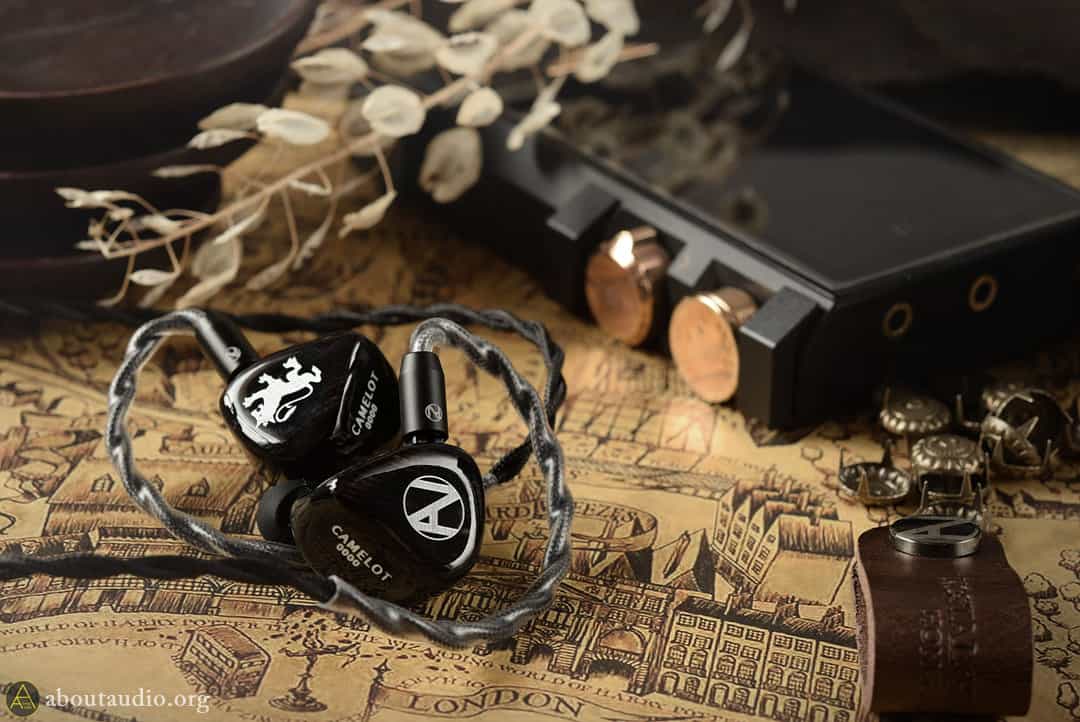
Sound impressions: The Lows
The large two push-pull drivers are put to good use for Camelot’s bass. The definition of being deep and grand applies perfectly here. Camelot heavy lifts the bass with both force and composure. It’s like driving a heavy, high-power car. Lows feel large and heavy yet accompanied by both power and accuracy, offering the bass great stability and calmness. This is something that differentiates from many other basshead IEMs – because Camelot does not make the bass sound bombastic or overdone. Instead, Camelot offers refined and elegant low frequencies. The bass responds quickly, but also maintains a relaxed and easy-going quality when necessary.
Reverbs are present just to the necessary extent of allowing the aftertaste to linger. In other words, the reverbs never get bloated. Camelot focuses on a clean and fast bass response while reverbs are only gently accompanied which is enough to give dynamics and liveliness to the low-end. The lows are thick and dense, but the ultra-lows and upper lows are well-balanced in portion, smoothly pulling out a deep, uniform bass. The texture of the bass is soft and smooth, with a subtle graininess to highlight those micro details. It gives me the impression that the ultra-lows are the primary focus which is then supported by an equivalent amount of upper lows.
Camelot has all the necessary elements of a great bass sound, while also considering comfort so that the bass wouldn’t easily cause fatigue to the ears. The bass rumblings are powerful and distinct yet don’t interfere with other frequencies. It’s quite amazing for me to find the bass presence and dynamics to be both strong and calm at the same time. Perhaps this is how it’d feel if FAudio Project Y took a complete overhaul as a bass machine?
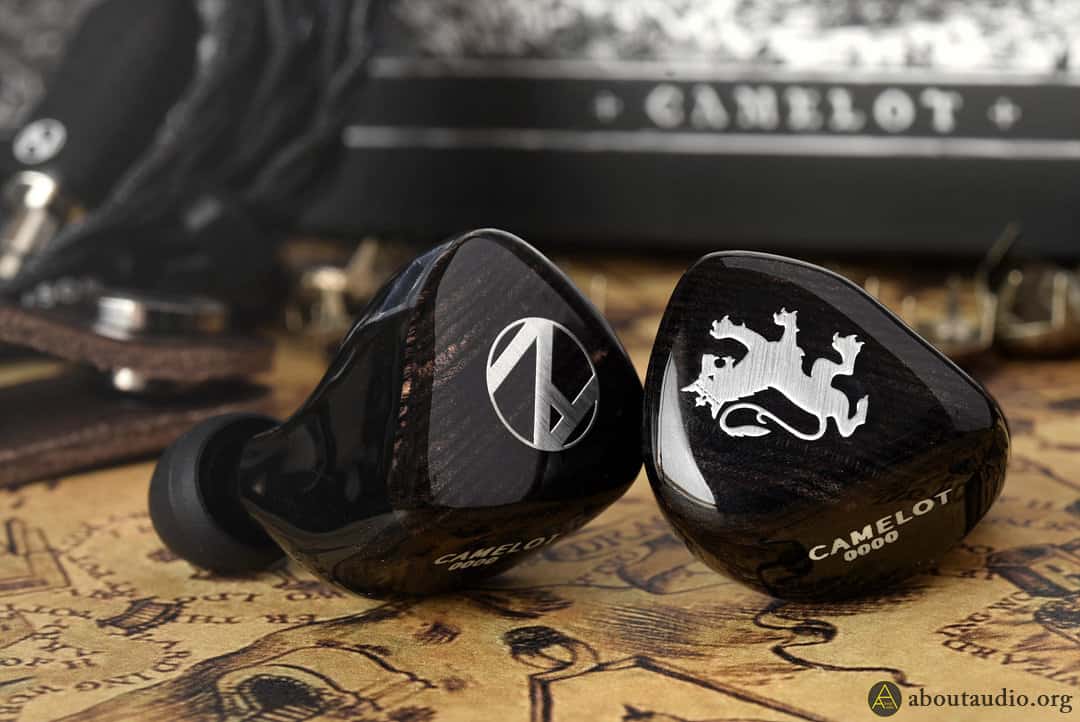
Sound impressions: The Mids
Vocals are clean-nuanced and mildly placed forwards. It’s more of a small step forward than being extruded away from the bass. At least the vocals never get recessed whatsoever. Camelot makes a clear distinction between lows and mids with seamless transitions. Vocals have a polished, mildly glossy timbre that is unique but not no way colored. It’s more of a boost that adds lushness and richness to the tone than making alterations from the original. Despite using multiple drivers with complicated structures, or perhaps thanks to them, mids maintain a very consistent sound throughout. No congestion or muddiness to be found across the range.
Like the bass, the midrange is smooth yet textured, with a slightly cool vocal tone. The vocal grains are adequately highlighted while not sacrificing the overall smoothness. Camelot carries subtle air throughout the mid-range, not necessarily offering strong refreshingness. However, it definitely provides the necessary shine and sparkles even for those who aren’t bassheads.
Vocals are well-bodied without being too thick or thin. I would suspect the structural benefits are playing another strong role here – because despite the powerful and rich bass, the midrange with only neutral thickness still comes through pronounced and doesn’t get overpowered by the bass. Thanks to this neutral tuning, both male and female vocals work out beautifully with the Camelot. Overall, great consistency in tone and flow is kept across the range without getting sibilant and shouty.
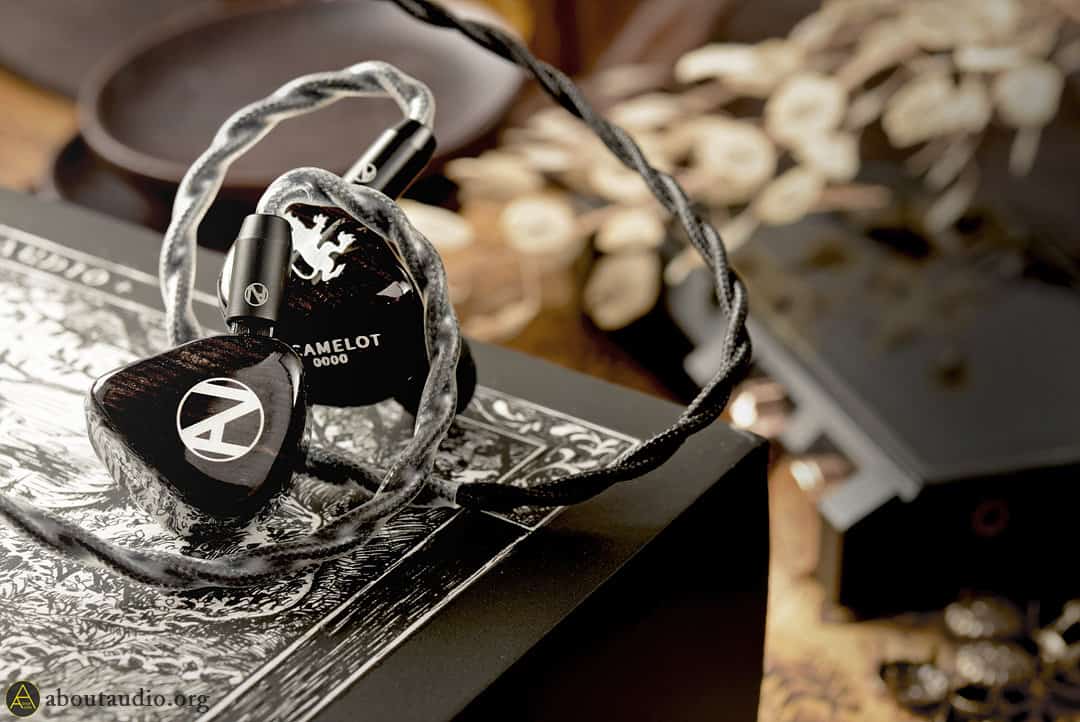
Sound impressions: The Highs, etc.
The trebles of Camelot did not disappoint me. When it’s just about time to be impressed with the lows and mids, the highs kick in with finesse that brings the experience to the next level. The silky smooth trebles and gently gloss texture. Camelot gives a fatigue-free sound signature for the trebles that are yet strikingly detailed. The micro-detailed trebles are displayed in an organized without having the trebles overdone.
The separation of the treble notes is excellent. Camelot’s ability in separation especially shines in complex songs with many instruments, being able to distinguish different positions of snare drums and strands of details. I would say it has an ordinary/neutral brightness and isn’t distinctly cold or warm, but rather closer to neutral with a slight coolness.
Earphones with a muddy background would produce shallow, vague sounds. Meanwhile, Camelot’s background has a dark, deep, and clean background. Pitch black like a void. Imagine a wide concert hall with all the lights off except a few spotlights shining the artist on the stage. Because of Camelot’s quiet and dark background, the mids and highs are showing their distinct presence despite them having an average brightness. The clean background also contributes to retrieving better depth and details from the tracks.
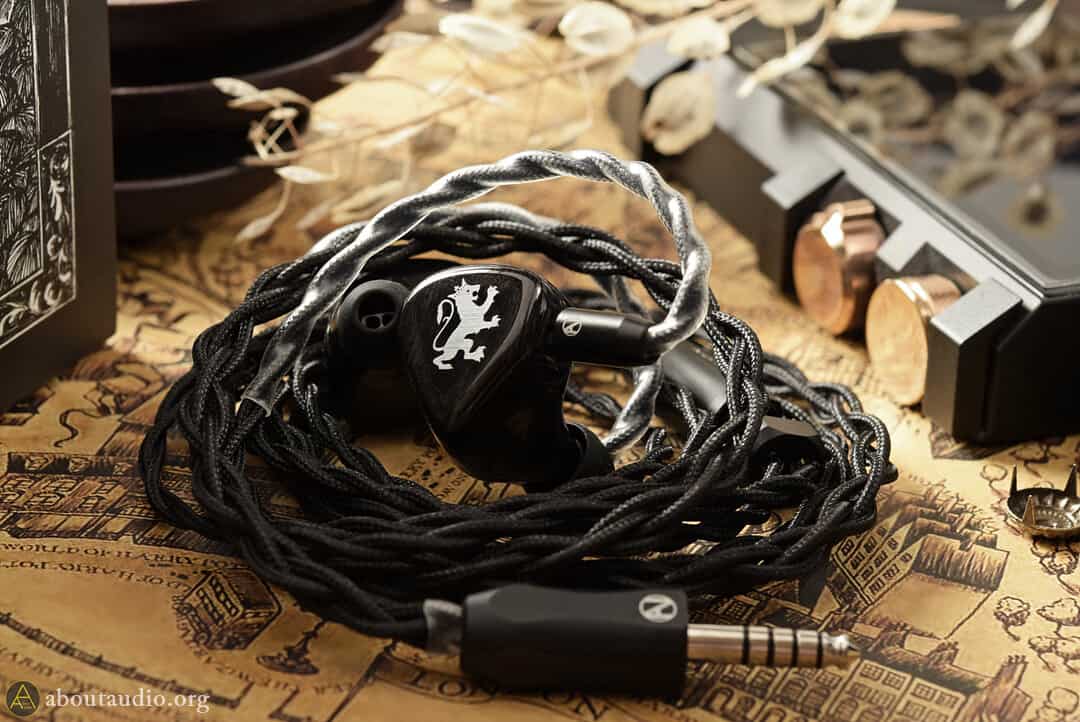
It’s not just about the driver counts.
Not all electrostatic IEMs are equally superb in their treble performance. Some IEMs just throw in our faces whatever treble details they find – while some may enjoy this, I’d personally call them untamed or even superficial in quality. On the other hand, Camelot is a skillful and leisurely performer that splashes out the treble with orders.
As for the soundstage, when I mentioned a concert hall, it wasn’t just a metaphor. Camelot indeed has a vast sense of space. What I’d like to emphasize is that this staging doesn’t feel to be boosted by reverbs and echos, but because the sound itself scales large in size. In all, Camelot’s sound presentation could be sorted down into three features – scaling large, high density, and effectively utilizing the empty space. These three combined result in details that are rich with information yet doesn’t suffocate your ears.

Compared to MMR Balmung
In terms of overall bass, the quantity is similar for both earphones, yet the sub-bass is slightly more emphasized on Balmung. I’m always amazed that Balmoong’s bass performance is not far behind Camelot even though it’s a full-BA structure. The clarity of the sub-bass is a bit better on the Camelot, but the difference is not significant. Rather, it is more meaningful to compare the quantity of the sub-bass. If you want more sub-bass quantity and thickness, Balmung may satisfy better for you bassheads. Camelot sure has top-tier sub-bass performance, but the sub-bass quantity might be a tiny bit lacking for some bassheads.
On the other hand, if you enjoy the ultra-low details but not too much for the sub-bass, Camelot may be a better choice. As mentioned, Camelot has a very even distribution of sub-bass and mid-low range. It’s one of Camelot’s strongest parts. Thanks to that I’m sure those who desire a rather flat sound could enjoy Camelot without an issue. Both earphones provide excellent headroom and grandeur with a deep sound.
Next is the treble. Compared to Camelot, Balmung’s treble emphasizes more on resonance and expansion, along with a moistier timbre. It’s the arcane, mysterious atmosphere unique to Balmung. In contrast, Camelot’s treble shows more sharpness and faster retrieval – like a slipping out after a quick jab. Despite Balmung’s arcane nuance, the tone itself is actually natural. Camelot has a slightly glossier sound that adds richness to the tone. In addition, Balmung has a slightly dim brightness in both the background and sound, while Camelot has a pitch-black background with a brighter sound. Arcane timbre for Balmung, the contrast of brightness for Camelot.
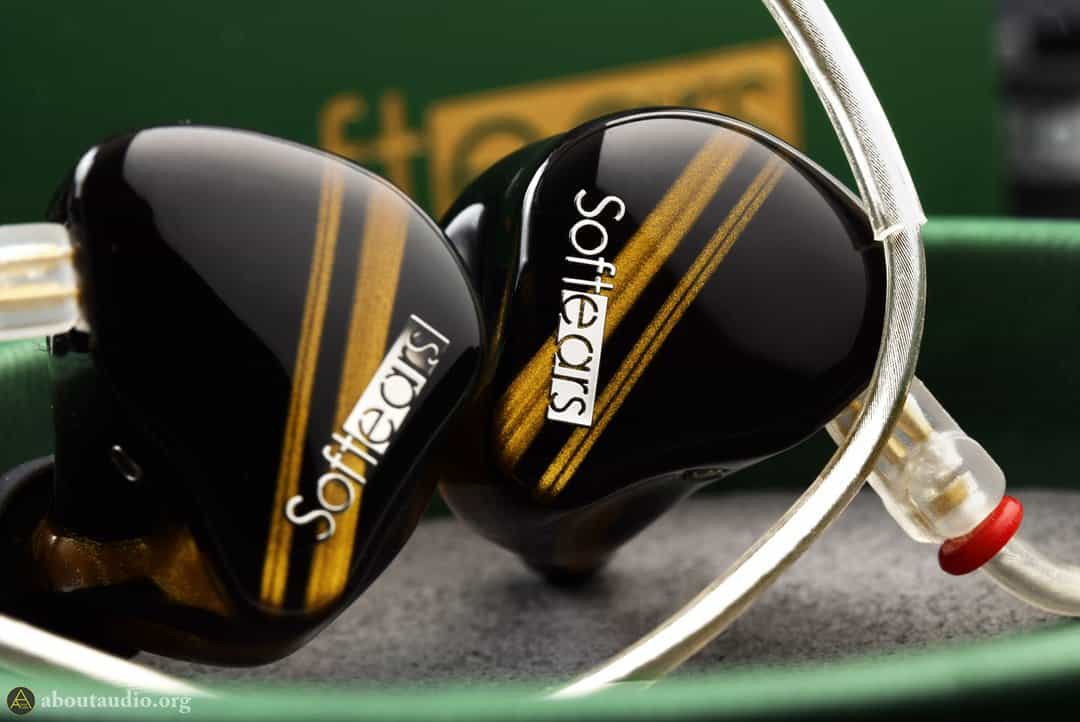
Compared to SoftEars Cerberus
While Camelot has a strong W-shaped sound signature, Cerberus has a slightly toned-down and flattened sound tendency overall. Cerberus has a more easy-going sound signature, prioritizing a relaxed and smooth music flow rather than pushing the sound with power – as Camelot does. The overall sound signature of Cerberus is flatter and more linear than Camelot. Both have a majestic and reference-like sound signature, but the execution method is different. Camelot achieves a well-balanced tuning by eliminating bloatedness while giving a strong presence of each frequency, while Cerberus achieves a similar purpose by making the frequencies flatter while preserving the depth and grand soundstage.
In terms of vocals, Cerberus has a similar brightness to Camelot but slightly more lively and airier in nuance. The tone of Cerberus is also a bit more neutral than Camelot, yet unlike the comparison with Balmung, the coloration difference between these two IEMs is minimal. The calm nature of Cerberus is also noticeable even in the trebles. Cerberus makes neat and detailed expressions for the highs but toned down in brightness and emphasis.
Now, let’s take a look at the bass. The majestic background and overall nuance are similar, but Cerberus tends to emphasize a clean and sophisticated sound, which is why Camelot may inevitably have stronger lows and mids. Camelot clearly outperforms Cerberus in terms of extreme bass extension, clear sound lines, quantity, and depth. In addition, Camelot is also superior in terms of the deep, rich depth of the mid-range.
With the comparisons being like this, one might wonder why bother buying Cerberus over Camelot. Yet I believe that the purposes of these two are different. Camelot is an IEM for those who want a w-shaped sound signature but dislike the bloated reverbs. On the other hand, Cerberus is an earphone for those who inherently prefer a flat sound signature but desire grandeur and deep mid-low frequencies. Overall, both earphones achieve a majestic and reference-like character, but their execution methods are clearly different.

Verdicts
Many claim themselves to be a basshead IEM for having strong sub-bass. If not, the sub-bass still overpowers the ultra lows to get much shine. As for Camelot, I would say it has a bass performance that differs in class, as it brings out the ultra lows just as clearly as the sub-bass, without overexaggerating the quantity.
The calm, weighty, and powerful impression of the Nostalgia Benbulbin has come all the way here. Camelot is an IEM that maximizes the fun of listening to a wide and deep bass, clear and clean midrange, and brilliant treble details. I’d say this is the level of performance that must be achieved if you want to attach an earphone with a flagship title and price tag. Camelot is not only an earphone with simple performance but also has its own unique charm and sonic stability. If you ever struggle to find an IEM that settles both strong dynamics and cleanness, Camelot is now here to be challenged for your needs.
RELATED REVIEWS
Cable: Nostalgia Audio Olorin: Naturally Silver
Cable: Nostalgia Audio Nerwen: All-round Copper
IEM: Nostalgia Audio Benbulbin: Limousine Ride
Source Player: Astell & Kern SP2000 CU
Eartips: Stock tips from Camelot
Have thoughts or questions? Leave a comment below!


